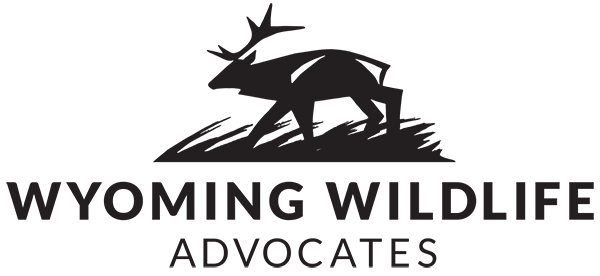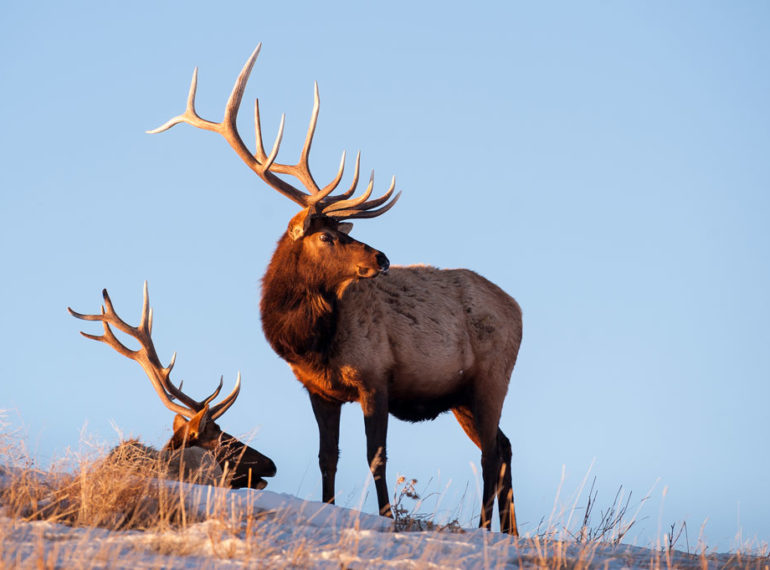by Cory Hatch/Jackson Hole News & Guide | NOVEMBER 9, 2016
Grand Teton National Park’s “elk reduction program” began Oct. 22 sans the usual fusillade of controversy to accompany the scores of bullets now whizzing around Blacktail Butte.
Set aside for a moment the question of whether hunting is even appropriate in a national park and the elk reduction program is still an embarrassment that’s antithetical to the tenets of fair-chase hunting.
Year after year we hear horror stories of hunters lining on up the roadside and firing haphazardly into groups of running elk. Tourists leave the park shocked instead of inspired. Grizzly bears claim carcasses and charge hunters.
In 2012 a hunter shot and killed a grizzly bear, a species protected under the Endangered Species Act. The following year, instead of working to protect bears, federal officials sought to resolve this grizzly mortality with a sort of perverse, retroactive Band-Aid — they said four more grizzlies could die in connection with the hunt through 2022.
You read correctly: Two federal agencies charged with protecting grizzly bears colluded to make them easier to kill inside a national park. Wow.
That decision has since been successfully challenged in court. Last March U.S. District Judge Rudolph Contreras ruled in favor of three conservation groups that opposed the four-bear limit (and the hunt in general).
In short, Grand Teton’s elk reduction program is a mess.
And yet, these efforts to end the hunt leave some unanswered questions.
Critics of the park hunt largely ignore the larger, interrelated problems involving elk management in Jackson Hole, including and especially Wyoming’s 22 state-sponsored elk feedgrounds and the National Elk Refuge.
What effect would ending the hunt have on Jackson Hole’s elk population? The obvious conclusion (wildlife managers, please correct me if I’m wrong) is that many elk would continue to use Grand Teton as a haven later into the fall, thereby avoiding hunters on the Bridger-Teton National Forest and the National Elk Refuge until the refuge hunt ends.
What effect would the persistence of large numbers of elk in Grand Teton have on the park’s plants and wildlife? Take a look at the relatively barren expanse of the National Elk Refuge and you might get some idea.
If elk do linger in the park in the absence of a hunt, as they do in subdivisions south of Grand Teton, hunter opportunity likely declines across Jackson Hole. The already bloated elk population might increase, and elk might be densely congregated for more time during the fall and winter, exacerbating the conditions that lead to disease transmission.
If the park hunt is somehow stopped cold turkey, what does the redistribution and increased numbers of elk mean for the transmission of brucellosis? Does it increase the risk of chronic wasting disease?
I have yet to hear critics of the hunt address any of these questions in a substantial way.
Grand Teton’s elk hunt is codified in the park’s enabling legislation. But Contreras’ grizzly bear decision does mark progress toward an outright ban.
In the meantime Grand Teton officials have taken some intelligent steps in the right direction, including excluding some parts of the park, such as the Snake River floodplain, where grizzly bears have repeatedly engaged in conflicts with elk hunters. Other measures to improve the hunt include limiting the amount of ammunition a hunter can carry, limiting the number of shots a hunter can take at running elk and shortening the length of the hunt.
Whether or not you like the taste of elk meat, hunting wapiti has existed in Jackson Hole for more than 10,000 years, according to archeologists who have studied local artifacts. Hunting is a long-standing and, I would argue, a critical part of how the landscape functions. Hunting is also a Western tradition and an inexpensive way for many families to put some high-quality protein on the table.
More than that, hunting is an important management tool if biology, not politics, is allowed to guide the perimeters.
Blindly ending Grand Teton’s elk reduction program could have unintended consequences, even as it protects the safety of the park’s grizzly bears and improves the tourist experience. Opponents of the park hunt owe the public some answers to some crucial questions.

